Tomato Cherry Red Fig
$4.49
Lycopersicon Esculentum
- Seed Count 40
- Sweet Flavour
- Annual
Out of stock
Email when stock available
Description
Tomato Cherry Red Fig is an heirloom variety dating back to the 18th century.
It produces 3-4 cm pear shaped tomatoes that have a very sweet flavour.
Historically, they were dried and packed away for winter use in substitute of figs.
Indeterminate, climbing variety. Requires staking.
Related Articles
| Method: Raise seedlings | Soil Temp: 16°C - 35°C |
| Cool Mountain: Oct - Dec | Position: Full sun |
| Arid: Aug - Mar | Row Spacing: 50cm |
| Temperate: Aug - Dec | Planting Depth: 3mm |
| Sub Tropical: Aug - Jan | Harvest: 80 Days |
| Tropical: May - Jul | Plant Height: 2m |
Climate and Growing Conditions
Best Growing Seasons:
- In most regions of Australia, tomatoes generally thrive when planted from September to November (spring) and will produce through summer until April, depending on local climate.
- See individual climate zone information on the product description tab.
Ideal Temperature
- Tomatoes prefer daytime temperatures between 20-30°C.
- Nighttime temperatures should ideally be above 10°C to promote good fruit set.
Site Selection
Sunlight:
- Choose a location that receives at least 6-8 hours of full sunlight daily.
- Tomatoes grow best in warm, sunny spots.
Soil Type:
- Well-draining soil is crucial as tomatoes do not tolerate waterlogged conditions.
- Sandy loam or loamy soil enriched with organic material is ideal.
Soil Preparation
Soil Testing:
- Before planting, conduct a soil test to determine pH and nutrient levels.
Amending Soil:
- Amend the soil with compost or well-rotted manure.
- Aim for a pH level between 6.0 and 6.8 for optimal growth.
Loosening Soil:
- Work the soil to a depth of at least 30 cm and remove any debris or rocks.
Planting Instructions
Starting Seeds:
- Start seeds indoors 6-8 weeks before the last expected frost date or plant in situ in mid spring.
Transplanting:
- Harden seedlings by gradually exposing them to outdoor conditions for about a week before planting.
Spacing:
- Plant seedlings 60-90 cm apart to ensure adequate airflow and reduce the risk of diseases.
Watering Practices
Frequency:
- Water deeply and regularly, especially during dry periods. Aim for about 2-3 cm of water per week.
Method:
- Use a soaker hose or drip irrigation to avoid wetting the foliage and minimize the risk of fungal diseases.
Signs of Water Stress:
- Monitor for wilting leaves (indicating too little water) or cracking fruit (indicating too much water).
Nutrient Management
Fertilisation:
- Use a balanced fertiliser (with equal N-P-K values) at planting.
- As plants grow and start flowering, switch to a fertiliser higher in phosphorus (the middle number of N-P-K) to promote fruiting.
Organic Options:
- Consider organic fertilizers like fish emulsion or seaweed extract.
Growing Indeterminate vs. Determinate Tomatoes
Tomatoes come in two main growth habits—indeterminate and determinate—and understanding the difference is key to growing them successfully.
Indeterminate Tomatoes
Growth Habit:
- These tomatoes grow like wild vines, stretching taller and producing fruit all season until frost kills them.
- Think of them as the marathon runners of the tomato world.
What They Need:
- Strong Support: Indeterminates need tall, sturdy stakes, cages, or trellises about 2m tall.
- Letting them sprawl invites disease and wasted space.
- Pruning: Remove suckers (those little shoots between stems and branches) to focus energy on fruit production.
- A well pruned plant yields better air circulation and bigger tomatoes.
- Space: Give them room—plant at least 2–3 feet apart so they don’t turn into a tangled jungle.
Best For: Gardeners who want a long harvest and don’t mind a little maintenance
Determinate Tomatoes
Growth Habit:
- These grow to a set size of around 1m, produce all their fruit in a short window, and then call it quits.
What They Need:
- Moderate Support: A short cage or stake is usually enough—they’re bushier but not as wild as indeterminates.
- Less Pruning: Leave the suckers alone.
- These plants are programmed to stay compact, so over pruning can reduce yield.
- Space: Plant 50cm apart. They’re good for small gardens or containers.
Best For: Busy gardeners, container growers, or those who want a big harvest all at once.
The Bottom Line
Indeterminates = Keep growing, keep producing, need training.
Determinates = Grow to size, fruit all at once, low maintenance.
Pest and Disease Management
Common Pests:
- Aphids: Small, green bugs that suck sap. Control them with insecticidal soap.
- Whiteflies: Small, flying pests; use yellow sticky traps to catch them.
- Tomato Hornworms: Large caterpillars that can defoliate plants.
- Handpick them off or use Dipel (Bacillus thuringiensis).
Diseases:
- Blight: Watch for yellowing leaves and brown spots. Ensure good air circulation and avoid overhead watering.
- Powdery Mildew: Look for a white powdery substance on leaves. Improve air circulation and treat with fungicides if necessary.
Pruning and Supporting Plants
Pruning:
- Regularly remove suckers (small shoots between the main stem and branches) to encourage better air circulation and direct energy to fruit production.
Support:
- Use cages or stakes to support indeterminate varieties, which continue to grow throughout the season, preventing fruits from touching the ground.
Harvesting and Storage
Timing:
- Harvest tomatoes when they’re fully coloured and slightly firm.
- Most tomatoes will ripen on the vine; pick them just before full ripeness in very hot conditions.
Storage:
- Store harvested tomatoes at room temperature, away from sunlight, for optimal flavour and texture.
- Avoid refrigerating as it can change the texture and flavour.
Blossom End Rot
Overview:
- Blossom end rot is a common physiological disorder that affects tomatoes and other fruits, characterized by a dark, sunken spot on the blossom end of the fruit.
- It is not a disease caused by pathogens but rather a symptom of nutrient imbalance and environmental stress.
Causes:
- Calcium Deficiency: The primary cause of blossom end rot is a lack of calcium in the developing fruit. Calcium is essential for cell wall structure and growth.
- Inconsistent Watering: Fluctuations in soil moisture can inhibit the plant’s ability to uptake calcium. Periods of drought followed by heavy watering can exacerbate the problem.
- High Nitrogen Levels: Excessive nitrogen fertilization can promote leafy growth at the expense of fruit development, leading to calcium deficiency in the fruit.
- Soil pH and Conditions: Soil with low pH or poor drainage can affect calcium availability in the soil.
Symptoms:
- Dark, sunken spots usually appear at the blossom end (the bottom) of the fruit.
- The affected area often becomes soft, and the fruit may rot if not harvested promptly.
- Symptoms tend to occur on the first few fruits developed on the plant, particularly during the early fruiting stage.
Prevention
Soil Testing:
- Conduct a soil test to determine pH and nutrient levels before planting.
- Aim for a pH between 6.0 and 6.8.
Consistent Watering:
- Maintain even soil moisture by watering regularly, especially during dry spells.
- A deep watering once a week is better than shallow, frequent watering.
Balanced Fertilization:
- Use a balanced fertilizer, being cautious not to over-fertilize with nitrogen.
- A fertilizer high in phosphorus (the middle number in N-P-K) can help promote healthy fruit development.
- Consider also using calcium supplements like gypsum or lime if needed.
Mulching:
- Mulch around the base of the plants with organic material to help retain moisture and stabilize soil temperature.
Remove Affected Fruits:
- While you can’t save the already affected fruits, removing them can help the plant redirect energy toward developing healthy fruit.
Postage Charge
Orders under $30 attract a $4.50 shipping charge. Orders $30 and above have free shipping.
Order Times
Seed orders are normally dispatched within three business days. You will receive an email when seeds are mailed out.
Postage Days
Seeds are mailed out Monday to Friday at 1pm. Except for the Friday of long weekends.
Postage Times
WA 2-3 Days: SA,NT 3-5 Days: NSW, ACT, QLD, VIC: 5-7 Days
Carrier
We use Australia Post Letter Postage for the majority of orders
Not only are our seeds packed in recycled paper envelopes, we keep the theme going when we post out website orders. To protect your seeds from moisture and the letter box munchers (snails), we use a very special plastic free material made from plants. They are then put into recycled mailing envelopes. Green all the way 💚🌿

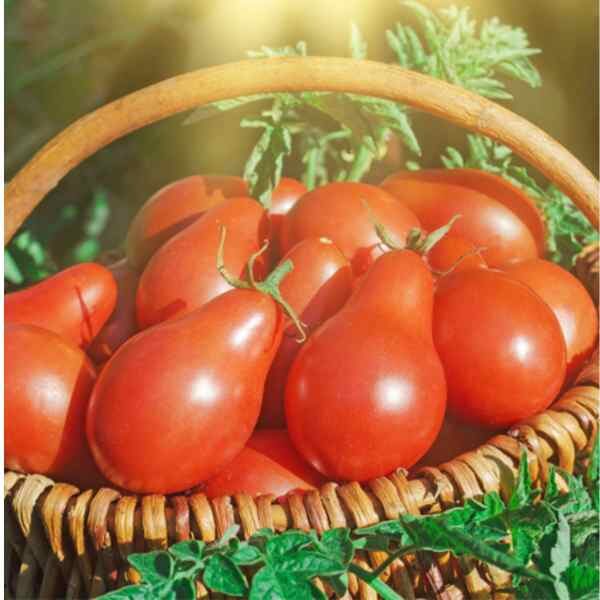



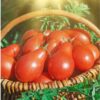
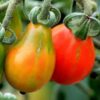
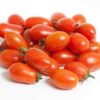
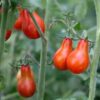

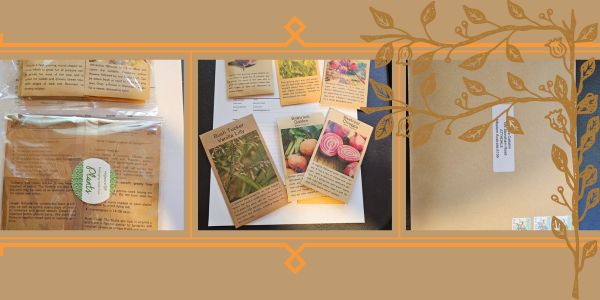
Reviews
There are no reviews yet